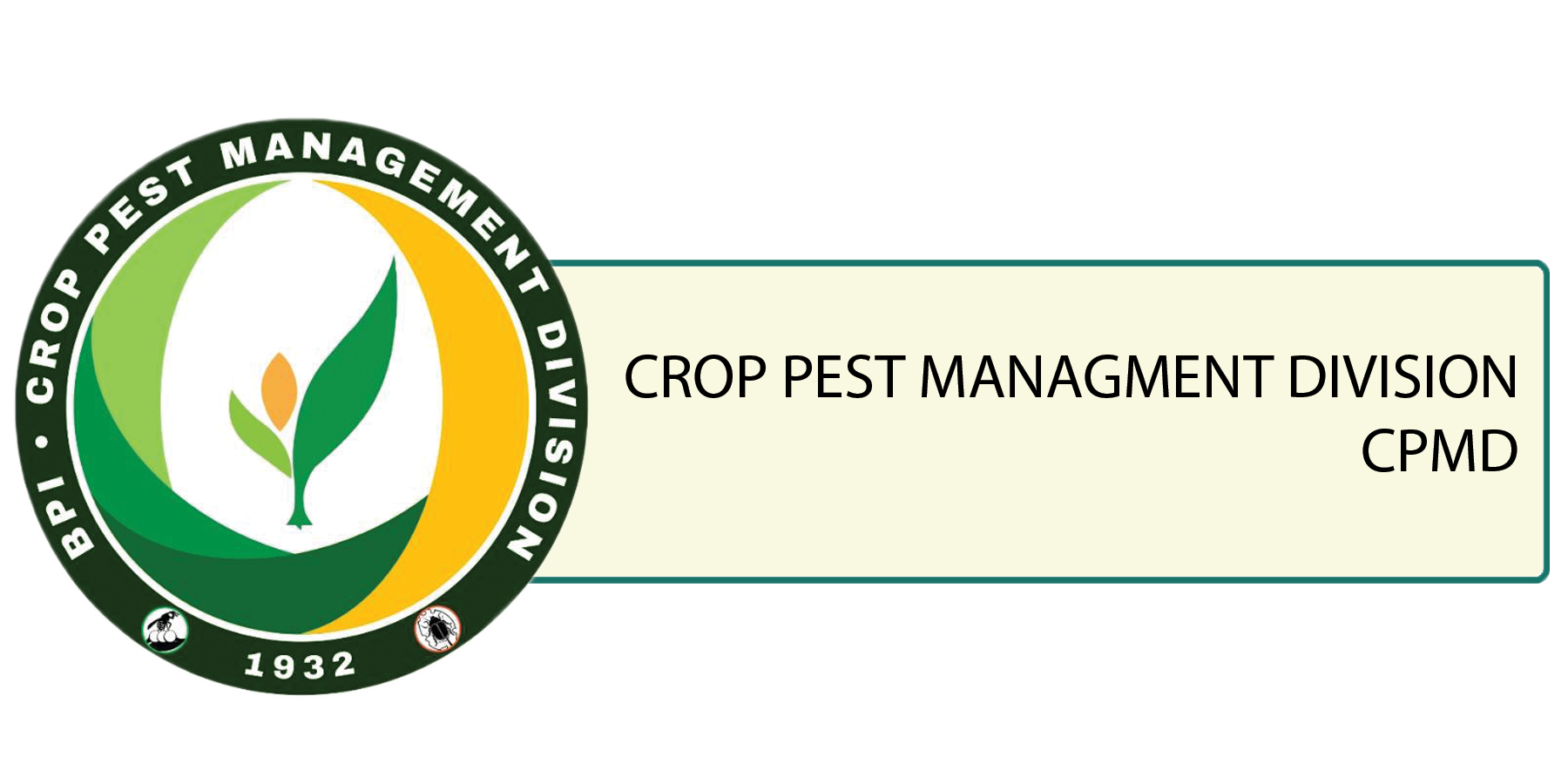The Crop Pest Management Division is the agency's arm tasked to administer crop pest management services anchored on optimization of crop harvests for greater food and economic sustainability. It traces its roots way back in 1932, upon the promulgation of Act No. 4007, known as the Reorganization Law of 1932, creating the Plant Sanitation Division.
The Division underwent several reorganizations. On April 1952, during the Third Republic, it was named as the Plant Pest and Disease Control Division.The Division took the name Pest and Disease Control Division by virtue of Reorganization Plan No. 30-A, as implemented by Executive Order No. 216, implemented on January 16, 1957. It became the Crop Protection Division under the Integrated Reorganization Plan of 1972, until it assumed its present name as mandated by the government's most recent reorganization plan.
MISSION/VISION
|
Vision |
Strengthen crop pest management services in the country by employing pest management strategies that are effective, safe and environment friendly to increase farm productivity, food sufficiency and security. |
|
Mission |
We manage the spread of crop pests in the country by ensuring the availability of effective biological control agents, functional surveillance and early-warning system, and regular plant health status updates. |
MANDATE
- Develops and formulates guidelines and standards on management of plant pests
- Provides technical assistance, coordination, and where necessary supervision over re-gional facilities, e.g. Regional Crop protection Centers (RCPCs) and surveillance and early warning system (SEWS), IPM-related national as well as bilateral/multinational technical program implementations are involved
- Assists and supports in regional implementation of national/bilateral technical program cooperation in crop protection
- Provides facilities for plant pests and disease diagnosis; mass production and rearing of biological control agents for field distribution training for crop protection staff and extension agents; and proper evaluation of national programs and projects on crop protection
- Supervises and evaluates researches and other development projects on exotic pests of special national considerations
- Maintains an up-to-date technical library on crop protection for researchers, technical workers and students of crop protection
- Acts as a technical back staff in trainings of KASAKALIKASAN, the country’s National Crop Protection Policy
- Acts as the central monitoring arm and repository of regional pest data
FUNCTION
- Plant Pest Surveillance, Monitoring and Forecasting
- Plant Pest Diagnostics
- Plant Pest Management.
- Biological Control Agents Mass Production.
- Competency Training and Extension on Crop Pest Management
- Biosecurity and Quarantine Measures.
- Applied and Adaptive Crop Pest Management Research.
- Public Advocacy on Crop Pest Management.
CONSTITUENT SECTIONS
Pest Forecasting Section
- Conducts pest monitoring and post-border pest surveillance, analysis of pest incidence reports and issuance of pest advisory
- Undertakes ecological pests assessment
Bio-Control and Integrated Pest Management (IPM) Section
- Oversees production, maintenance, distribution, screening, and assessment of the effectiveness of bio-con agents
- Provides direction in the establishment of sustainable bio-control agents production systems in communities
- Undertakes field verification of IPM activities and conducts assessment of RCPCs and the network bio-control laboratories
Plant Health and Pest Status Section
- Provides national plant health status
- Develops and maintain a repository of pest data, specimen-based pest list and other crop protection information
- Determines and reports the pest incidence and resistance (i.e., invasive, outbreak or epidemic)
ACTIVITIES
- Biological Control – identification, evaluation, conservation, mass production of beneficial organism for field application and integration with existing pest management practices
- Integrated Pest Management – identification, development, verification and field application of existing novel sustainable pest management practices
- Pest Monitoring – formulation, development, verification and field application of sound pest monitoring and surveillance activities in coordination with RFUs, RCPCs and LGUs
- Pest Museum – maintained at the Crop Pest Management Division for ready reference and preserved collections.
- Technical Assistance – to clientele, peers, and the general public in the identification and management of crop pests, serve as resource speakers on different crop pest management topics, hands-on training on mass production of biological control agents
- Pest Clinic – inquiries regarding insect pests, diseases, rodents and weeds, these are identified, preserved and management recommendations are given to the clienteles
TECHNOLOGY
- Trichogramma – egg parasitoid utilized as biocon agent to control asian corn borer (t. evanescens), rice stemborer (t.japonicum) and vegetable lepidopterous pest (t. Chilonis)
- Metarhizium – green muscardine fungus used as bioagent versus rice black bug, rhinoceros beetle of coconut, coconut leaf beetle, etc.
- Chilocorus nigrita – primarily feeds on the family Diaspididae namely; Aspidiotus destructor (armoured scale) on coconut andLepidosaphes ulmi (mussel scale) on lanzones but also has been reported to feed on whiteflies, aphids and psyllids.
- Trichoderma – most common fungal antagonist and used as compost fungus activator
- Lacewing – preys on aphids, thrips, mealybugs, whiteflies, armyworm, budworms, bollworms, borers, corn earworms, scale insects, psyllids, etc.
- Telsimia nitida - feeds on Aspidiotus destructor (armoured scale) and Lepidosaphes ulmi (mussel scale)
- Earwig – (Chelisoches morio) feeds on coconut leaf beetle Brontispa longissima; (Euborella annulata) feeds on corn borer and insect pests of vegetables



























